This handy Spectrum Math Grade 7 Answer Key Chapter 7 Lesson 7.5 Other Probability Models provides detailed answers for the workbook questions
Spectrum Math Grade 7 Chapter 7 Lesson 7.5 Other Probability Models Answers Key
When an event does not have uniform probability, the odds of each particular outcome are not equally likely.
When using this spinner, there is a greater chance of landing in the blue section than there is of landing in the red or white sections.
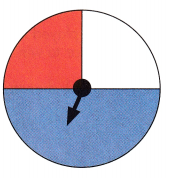
Chance of spinning blue – \(\frac{1}{2}\)
Chance of spinning red – \(\frac{1}{4}\)
Chance of spinning white – \(\frac{1}{4}\)
For each situation pictured, state if the odds of all outcomes are equal or not equal.
Question 1.
a.
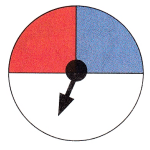
Answer:
Not equal,
Explanation:
Given from the picture the odds of outcomes are not equal as odds of each particular outcome are not equally likely.
b.
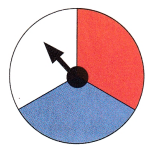
Answer:
Equal,
Explanation:
Given from the picture the odds of outcomes are equally likely and event is uniform probability.
Question 2.
a.
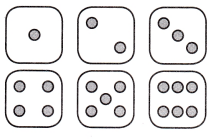
Answer:
Equal,
Explanation:
Given from the picture dice the number of outcomes are equally likely which the event has uniform probability.
b.
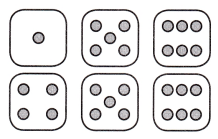
Answer:
Not equal,
Explanation:
Given from the picture dice the odds of outcomes are not equally likely so, the event is not in uniform probability.
Question 3.
a.

Answer:
Equal,
Explanation:
Given from the picture flipping the coin the odds of outcomes are equally likely so the event is uniform probability.
b.
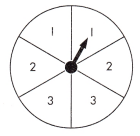
Answer:
Equal,
Explanation:
Given from the picture the spinner has equal no of odd outcomes with equal spaces and the event is uniform probability.
Question 4.
a.

Answer:
Not equal,
Explanation:
Given from the picture number of odd outcomes of balls are not equally likely and event is not in uniform probability.
b.
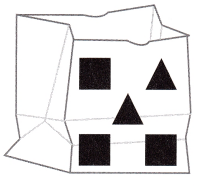
Answer:
Not equal,
Explanation:
Given from the picture the number of triangles and squares are not equally likely and event doesn’t has uniform probability.
When a probability event has unequal odds, they can be rated the same way as fractions or other ratios.
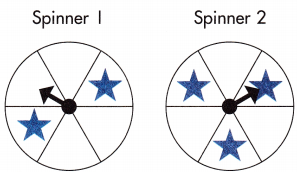
A game is being played in which the spinner must land on a star to win.
Spinner 1 – \(\frac{2}{6}\) or \(\frac{1}{3}\) chance of spinning a star,
Spinner 2 – \(\frac{3}{6}\) or \(\frac{1}{2}\) chance of spinning a star \(\frac{1}{3}\) < \(\frac{1}{2}\) the greatest chance of winning is using spinner 2.
Circle the spinner with the best odds of winning. Show your work.
Question 1.
Spin an even number:
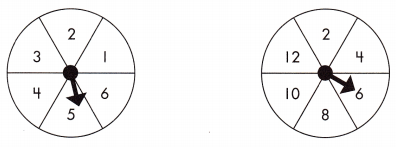
Answer:
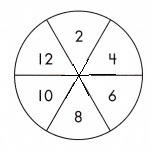
Explanation:
Given from the spinner spin an even number so, spinner 1 no of even numbers are 3 and spinner 2 no of even numbers are 6 spinner 1 – \(\frac{3}{6}\) or \(\frac{1}{2}\) chance of spinning an even number,
spinner 2 – \(\frac{6}{6}\) or \(\frac{1}{1}\) chance of spinning an even number \(\frac{1}{1}\) > \(\frac{1}{2}\) the greatest chance of spinning an even number is spinner 2.
Question 2.
Roll a sum of 10 with two dice numbered as shown:

Answer:

Explanation:
Given from the first dice number of outcomes are 6 and in second die number of outcome are 36. So sum of 10 with two dice
numbered is roll for second dice .
Question 3.
Spin the color blue.
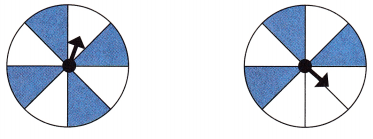
Answer:
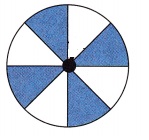
Explanation:
Given from spinner 1 – \(\frac{4}{8}\) or \(\frac{1}{2}\) chance of spinning the color blue,
spinner 2 – \(\frac{3}{8}\) chance of spinning the color blue so \(\frac{1}{2}\) > \(\frac{3}{8}\), So the greatest spinning of color blue is spinner 1.
Question 4.
Choose a gray marble.

Answer:
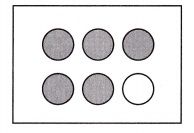
Explanation:
Given from the Box 1 – \(\frac{2}{6}\) or \(\frac{1}{3}\) chance of grey marbles,
Box 2 – \(\frac{4}{6}\) or \(\frac{2}{3}\) chance of grey marbles. So \(\frac{2}{3}\) > \(\frac{1}{3}\). So the chance of greatest number of grey marble is box 2.
Solve the problems below.
Question 1.
A spinner has 6 sections of equal size. One is red, two are blue, and 3 are yellow.
a. If you spin the spinner one time, what are the odds that you will land on blue?
Answer:
\(\frac{1}{3}\),
Explanation:
Given no. of total sections are 6 and no. of blue sections are 2 so, the spinner spins one time number of odds that will land on blue is \(\frac{2}{6}\) = \(\frac{1}{3}\).
b. If you spin the spinner twice, what are the odds that you will land on yellow on the second spin?
Answer:
\(\frac{1}{2}\),
Explanation:
Given spinner spins twice number of yellow sections are 3 so, \(\frac{3}{6}\) = \(\frac{1}{2}\) number of odds will land on yellow on the second spin.
Question 2.
You flip a coin that has a heads side and a tails side.
a. What are the odds that the coin will land on heads the first time you flip it?
Answer:
\(\frac{1}{2}\),
Explanation:
Given number of outcomes by flipping a coin is 2 so, the odds that the coin will land on heads the first time is \(\frac{1}{2}\).
b. You have flipped the coin 50 times. You have landed on heads 31 times and tails 19 times. What are the odds that the coin will land on tails on the next flip?
Answer:
\(\frac{1}{2}\),
Explanation:
Number of outcomes by flip a coin is 2 ,odds that the coin will land on tails on next flip is \(\frac{1}{2}\).
Question 3.
At the school festival, you can win a bicycle by pulling a red ball out of bag. The first bag has 52 white balls, 27 green balls, and 11 red balls. The second bag has 25 white balls, 25 green balls, 25 yellow balls, and 10 red balls.
a. What are the odds of pulling a red ball from the first bag?
Answer:
\(\frac{11}{90}\),
Explanation:
Given total number of outcomes from first bag are 52 + 27 + 11 = 90 and no. of red balls are 11 so, odds of pulling a red ball from bag is \(\frac{11}{90}\).
b. What are the odds of pulling a red ball from the second bag?
Answer:
\(\frac{10}{85}\) or \(\frac{2}{17}\),
Explanation:
Given total number of outcomes from second bag are 25 + 25 + 25 + 10 = 85 and no. of red balls from second bag are 10. So, odds of pulling a red ball from second bag is \(\frac{10}{85}\) = \(\frac{2}{17}\).
c. Which bag has the best odds?
Answer:
First bag,
Explanation:
First bag has the best odds as number of outcomes are more in first bag than second bag that is 90>85.
Question 4.
You roll two regular dice that are numbered 1-6. What is the probability of rolling the following sums:
a. 2: ________________
b. 3: ________________
c. 4: ________________
d. 5: ________________
e. 6: ________________
f. 7: ________________
g. 8: ________________
h. 9: ________________
i. 10: ________________
j. 11: ________________
k. 12: ________________
Which sum gives you the best odds?
Answer:
The sum 7 gives best odds,
Explanation:
As we know total number of outcomes by rolling regular two dice are 36 so,

The following are the probability of rolling sums :
a. p(2): \(\frac{1}{36}\),
b. p(3): \(\frac{2}{36}\),
c. p(4): \(\frac{3}{36}\),
d. p(5): \(\frac{4}{36}\),
e. p(6): \(\frac{5}{36}\),
f. p(7): \(\frac{6}{36}\),
g. p(8): \(\frac{5}{36}\),
h. p(9): \(\frac{4}{36}\),
i. p(10): \(\frac{3}{36}\),
j. p(11): \(\frac{2}{36}\),
k. p(12): \(\frac{1}{36}\).
Question 5.
A bag contains 9 green marbles and 16 red marbles. You will choose one marble out of the bag without looking.
a. What are the odds of choosing a red marble?
Answer:
\(\frac{16}{25}\),
Explanation:
Given total number of outcomes are 9 + 16 = 25 and no. of red marbles are 16. So, odds of choosing a red marble is \(\frac{16}{25}\).
b. You do not replace marbles after they are chosen. So far you have chosen 4 red marbles and 2 green marbles. What are the odds of choosing a red marble now?
Answer:\(\frac{12}{19}\),
Explanation:
Given total number of outcomes after chosen are 4 + 2 = 6 that is total number of outcomes is 25 – 6 = 19 and no. of red marbles are 16 – 4 = 12 that is odds of choosing a red marble now is \(\frac{12}{19}\).